Undergraduate research on Capitol Hill: Colleges of Arts, Humanities and Social Sciences, and Education and Human Services
Editors note: This is part two of a three part series outlining the research undergraduate students took to Capitol Hill last February. Click here for parts one and three.
Utah State University’s Research Week gave students and faculty the opportunity to share and learn about the different research efforts being conducted on campus.
Hosted by the department of Research and Graduate Studies, Research Week held several events including the Faculty Author Exhibit, Ignite USU and the Student Research Symposium.
Last February, the RGS gave several undergraduate researchers the opportunity to take their projects to Capitol Hill in Salt Lake City. They presented on various topics from saving bees to helping children learn mathematics. In honor of Research Week, they have shared their projects with The Utah Statesman.
Caine College of the Arts
Ethan Seegmiller
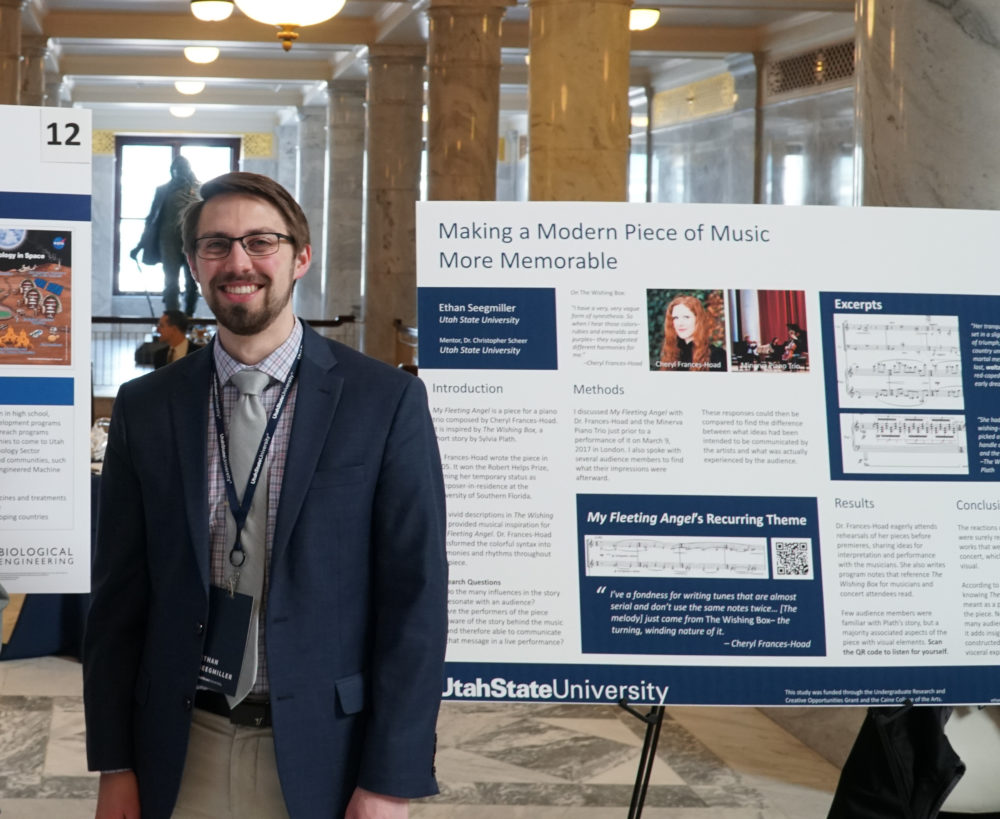 Tyler Grow
Tyler Grow Ethan Seegmiller studies music at Utah State. He wants to know if knowing a little bit about music and the inspiration behind it would change how a person thought about it when they listened to it.
Seegmiller went to London for two weeks to talk to composer Cheryl Frances-Hoad about her musical composition “My Fleeting Angel.”
Seegmiller also went to Frances-Hoad’s concert and talked to some of the audience members afterwards, trying to compare whether they knew anything about the music and if that affected how they thought about it.
He found that overall, people that knew a little bit about the music remembered it better and had more positive feelings for it.
“That is exciting for me because now if I have something I want to show people I can give them background beforehand, and they may think more positively about it,” Seegmiller said.
College of Humanities and Social Sciences
Elise Maddox and Morgan Sanford
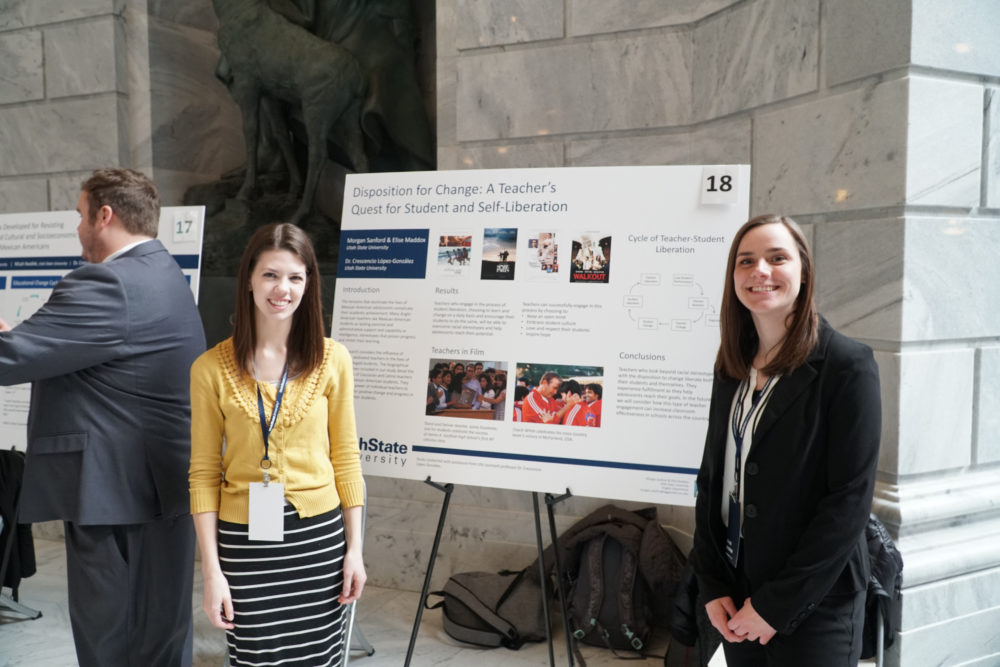 Tyler Grow
Tyler Grow Elise Maddox and Morgan Sanford are studying English at Utah State. They want to know how teachers affect the potential of Mexican-American students despite stereotypes.
Their main findings are the key to making a difference in the lives of all students is a willingness to change both teaching practices and ways of thinking.
“Teachers who are willing to self-reflect and change can liberate these students from stereotypes. This is so important, because teachers can help this student be all they can be,” Maddox said.
“Our research impacts specifically impacts pre-service teachers at Utah State by informing them of ways that they can best help the Mexican-American students in their classrooms,” Sanford said.
Maddox and Sanford became involved in this project after learning about it in one of their classes. Sanford speaks Spanish, so she was immediately interested in this connection. The two came together over their joint investment in making a difference in the classroom.
“Our research can change these Mexican-American children’s lives. We are very proud of that,” Maddox said.
Erin Searle
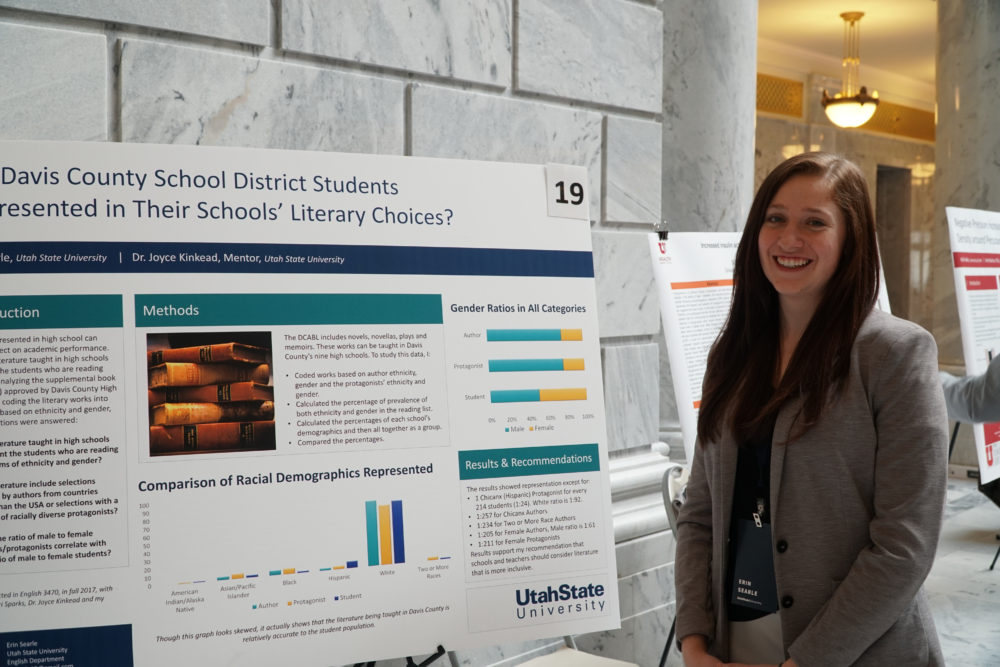 Tyler Grow
Tyler Grow Erin Searle is studying English at Utah State. She wants to know what literature students read in Davis County High Schools and how diverse that reading is.
Searle focused on the literature’s racial demographics and gender demographics and how it correlated with student demographics. Her question was whether or not these demographics were similar.
She found, race-wise, literature was fairly even throughout the high schools with accurate representations of race of students. Gender-wise, the literature was written by half men and half women. However, Searle noted that 75 percent of men wrote about male protagonists.
The main goal of Searle’s project was to find if students are being taught tolerance and acceptance at a young age.
“I believe that teaching literature has an effect on how students in college think about literature and how they think about others,” Searle said. “I want those kids to be able to think, ‘I am a white woman, can I read a book about an Asian boy and still relate to it?’ and say yes I can.”
Emma Eccles Jones College of Education and Human Services
Alyssa Collins and Brette Hoggan
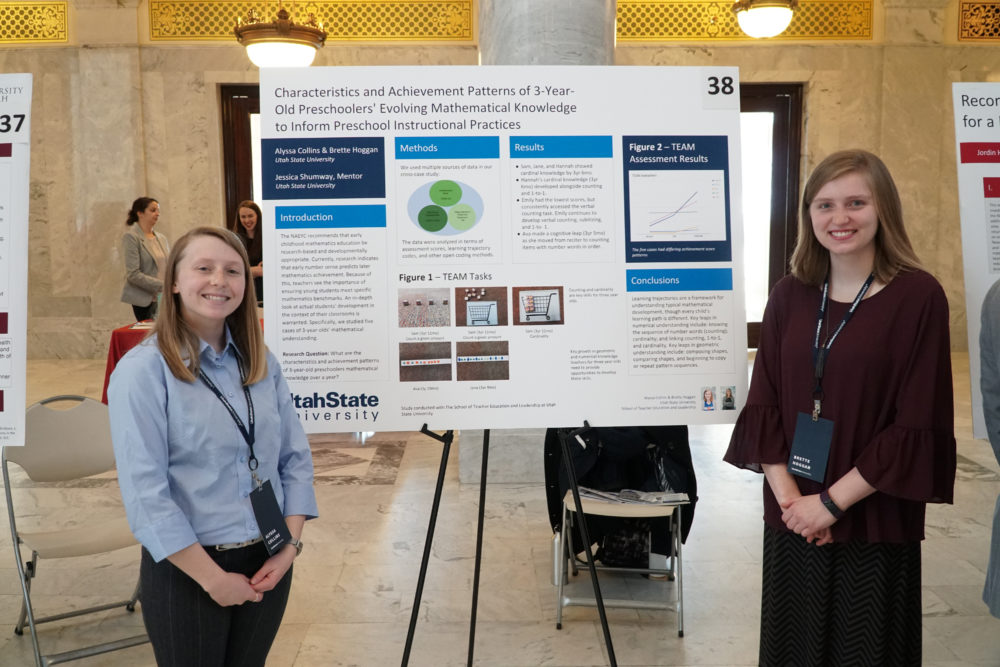 Tyler Grow
Tyler Grow Collins and Hoggan are early childhood education majors. Their research followed three year old children and how their mathematical knowledge developed over the course of a year.
“This project gave us a lot of new skills as teachers. It helped us recognize development in the children that we work with,” Collins said
Over the course of the year the duo worked hard to come up with different activities in a classroom for the three year olds. Some days the kids would do great and show a lot of growth, but other days it was hard to see. Overall the research provided some insight on how to more effectively present math skills to young children.
“For most preschool teachers mathematics can be a scary topic for children. This helped us to be more comfortable with the fact of teaching mathematics to young children,” Hoggan said.
Isabella Stuart
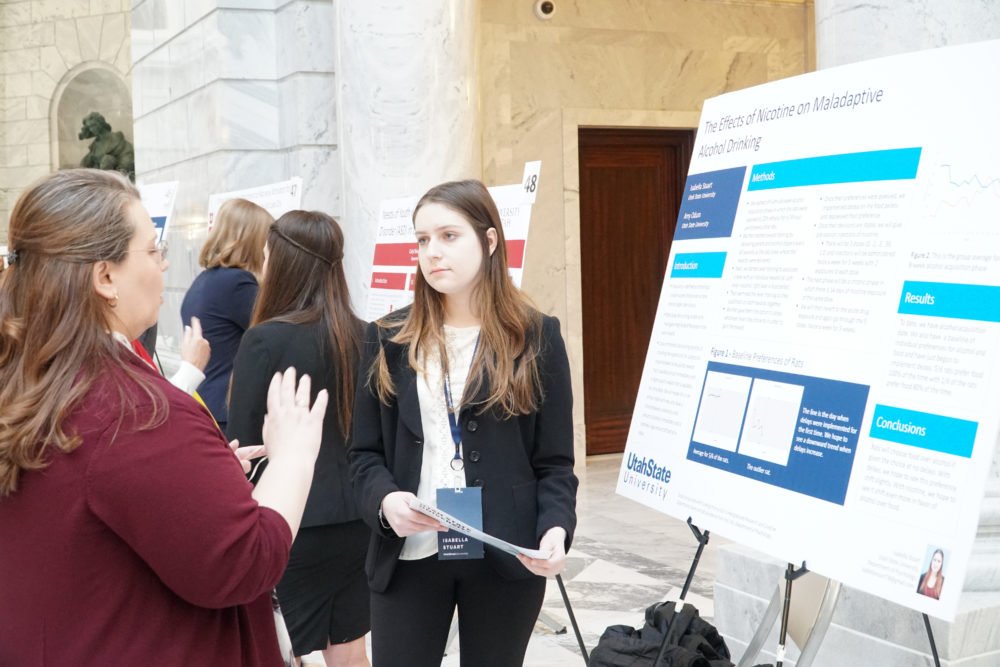 Tyler Grow
Tyler Grow Isabella Stuart studied the relationship that nicotine and alcohol have on each other. In order to do this she got to utilize a rat model.
“This information can help us understand whether people drink more after they smoke and if they do, this can affect how people quit drinking if they are smokers as well. My research is using a rat model to address whether nicotine increases alcohol drinking over more rational behavior,” Stuart said.
Stuarts research will help to give more information on addiction. With this research she hopes to better understand how we can help those struggling with a addiction.
“Others should care about this research because addiction is a complex process and there is still so much unknown about the process. If we can better understand how drugs interact and influence each other, then we can better treat those struggling with addiction,” Stuart said.
R.J. Risueño
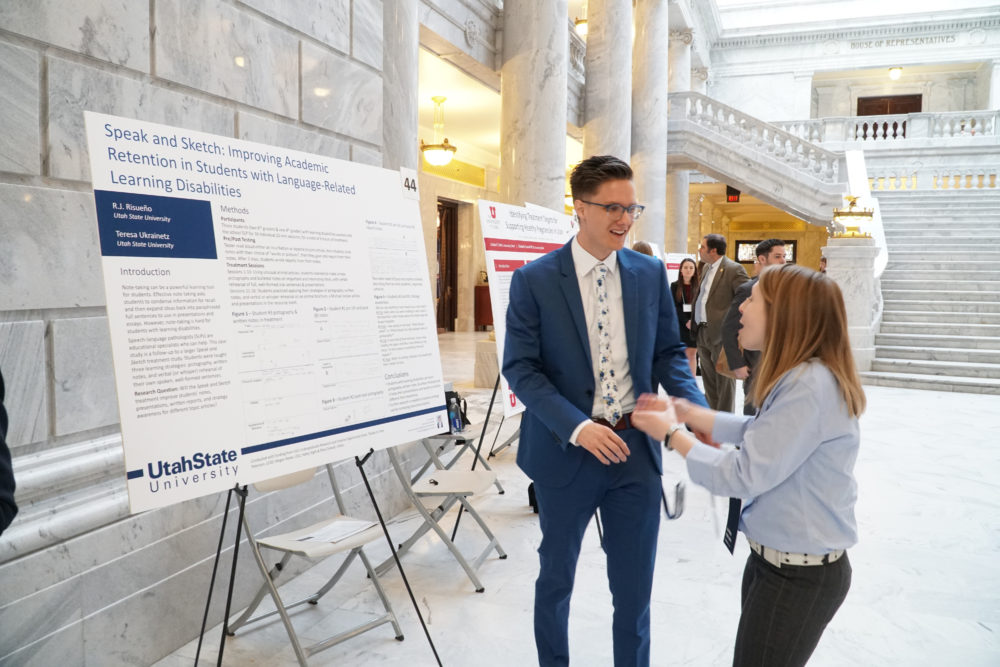 Tyler Grow
Tyler Grow R.J. Risueño’s passion for helping kids played a huge role in his research project. His project looked at how to create better note taking strategies for kids with learning disabilities. His new strategies include having children draw quick pictures or use their own words then allowing a speech therapist to help them put this into full notes.
“This is something that can be used in all schools. Our research has proven that it helps with essay writing. We essentially are closing the opportunity gap for kids with learning disabilities,” Risueño said.
Risueño has spent the past few months consumed in his project. He was able to go from being a research assistant to a full fledged researcher. He hopes to continue his research and take it to another level.
“I want to take this research to a PHD program so we can look at helping bilingual kids with learning disabilities,” Risueño said. “I’m hoping ten fifteen years down the road I can have my own research lab to pursue this.”
To view each undergraduate’s abstract look here.
— shelby.black@aggiemail.usu.edu
@shelbsterblack
—brianne.sorensen@aggiemail.usu.edu
@SorensenBrianne

